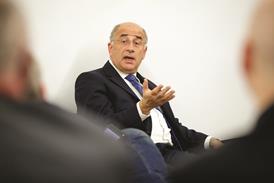The idea of costs budgeting seems eminently more sensible following the eye-popping costs judgment in the Pan Nox Emissions Litigations. The budgets of both sides totalled a staggering £649,478,066; Mr Justice Constable and Senior Costs Judge Gordon-Saker slashed the budgets by £253,534,986.
These telephone-number figures are eye-watering by any measure, or in the words of the judgment ’frankly absurd’. For the world beyond the legal industry, it adds credence to the popular narrative that 'no matter what, lawyers always make money'. The reality is that the costs reduction is the court’s monetary articulation of the inefficiencies permitted in litigation.
If we cast our eyes back to Sir Rupert Jackson’s 2009 Review of Civil Litigation Costs, this was precisely the scenario he sought to avoid. Back then, there existed a broad support for costs budgeting. However, the notable budgeting exemption under CPR3.12 also came into play for cases with claim values over £10m.
Why an inflation-immune £10m became the threshold for budgeting is a question unto itself. The popular justification for this high-ish threshold is that the bigger the claim value, the greater the complexity and uncertainty and thus the more difficult it is to budget – legally logical, but commercially flawed. Complex situations demand certainty to prevent complexity breeding complexity, especially in litigation where complexity is a tool. In high-value litigation where the stakes are greater, there is an incentive to throw as much time and money at the case as necessary. And, when one side can throw vast amounts of time and money at the case, basic game theory applies: the other side can match or concede.
This is seemingly what happened in the Post Office sub-postmasters' claim. The £24m in legal fees spent on disclosure could have prevented the Post Office’s reputational and monetary damage, the value of which far exceeded £24m. But in doing so, it also threatened the collapse of the sub-postmasters’ case. It did not of course, but the consequence was that the sub-postmasters received only a small percentage of the total settlement amount.
In simple terms, the victims of wrongdoing would have walked away with far more had £24m not been spent on disclosure, irrespective of whether the case was funded. If one were to instead imagine that the case had been cost-budgeted, with both sides agreeing to £5m each and any subsequent application for increased budgets being rigorously examined as in Pan Nox, it takes no genius to see how that would also have altered the conduct of the participants and the overall dynamics of the litigation, how the costs would have been kept down and again, how the claimants would have ended up with a lot more in damages.
This first pillar of the '101 of defending a litigation' does not relate to the legal merits but rather how to outfox the opponent; and this seems precisely what Lord Justice Jackson foresaw when he wrote his two-sentence foreword: 'In some areas of civil litigation costs are disproportionate and impede access to justice. I therefore propose a coherent package of interlocking reforms, designed to control costs and promote access to justice.'
Of course, lawyers will argue that costs cannot be budgeted for larger cases. But hiding behind complexity and unknowns is not allowed in other industries: start-ups, research and development and construction projects all have to budget. Listed companies not only provide market forecasts on operationally complex, multi-dimensional businesses that are subject to factors outside their control far more numerous and dynamic than in any single litigation case, but they do so under legal obligations.
Moreover, the public markets provide a useful parallel for how costs could be budgeted across the board. In the same way a listed company must forecast its performance for each year based on reasonable assumptions, so too could costs be forecasted. All budgets could have a minimum 10% contingency in the same way companies are given slack in their forecasts. And if the changes become material, a CCMC could adjust those costs, much as a company provides a trading update. Being on the front foot, rather than leaving this to a costly retroactive detailed assessment, seems not only logical but in line with the rest of the world which has no choice but to deal with complexity and uncertainty. And if court directions were coupled with budgeting, this might even lead to swifter proceedings.
If one agrees that uncertainty is the cause of much stress, the removal of uncertainty of costs would have benefits for all. For claimants, it would reduce exposure to a significant tactical defendant advantage which is all too often used against them. Litigation funders would be able to fund more cases, potentially with lower pricing because the risk premium charged for cost uncertainty would no longer be required, allowing more impecunious claimants to access justice and funded claimants to walk away with a lot more of the damages than happened in the Post Office case.
On a macro level, there is also the issue of the absolute level of costs and costs inflation in the UK. At a time when the UK legal industry’s standing is coming under increasing competitive pressure from cheaper European jurisdictions, costs budgeting would bring greater credibility and impetus to keeping the UK’s leading position in the world of law.
Arguably however, the biggest beneficiaries of cost budgeting on large cases may actually be the well-resourced defendants themselves. For corporates defending a litigation, the primary consideration is often not legal merits but a cold financial probability-weighted assessment of the varying degrees of liability. If costs were required to be budgeted, defendants could not only make better-informed assessments of potential liabilities but deepen their understanding of which law firms really do act in their best interests as far as fees are concerned. It may of course be that the Post Office really did want their legal team to incur £24m worth of work on disclosure, but costs budgeting would have allowed them to assess whether the same work and outcome could have been achieved for less. And if in funded cases, this was coupled with uplifts, ATE premiums and funder returns being recoverable (as is increasingly common in arbitration), this would empower well-resourced defendants to better assess the performance of their instructed lawyers.
Not only does the greater accountability, transparency and certainty from cost budgeting high-value claims seem a no brainer, especially in light of Pan Nox, but the arguments for not costs budgeting seem to be outweighed by the benefits of enhanced access to justice and a more effective legal system.
Tets Ishikawa is managing director of LionFish, a litigation funder



























3 Readers' comments